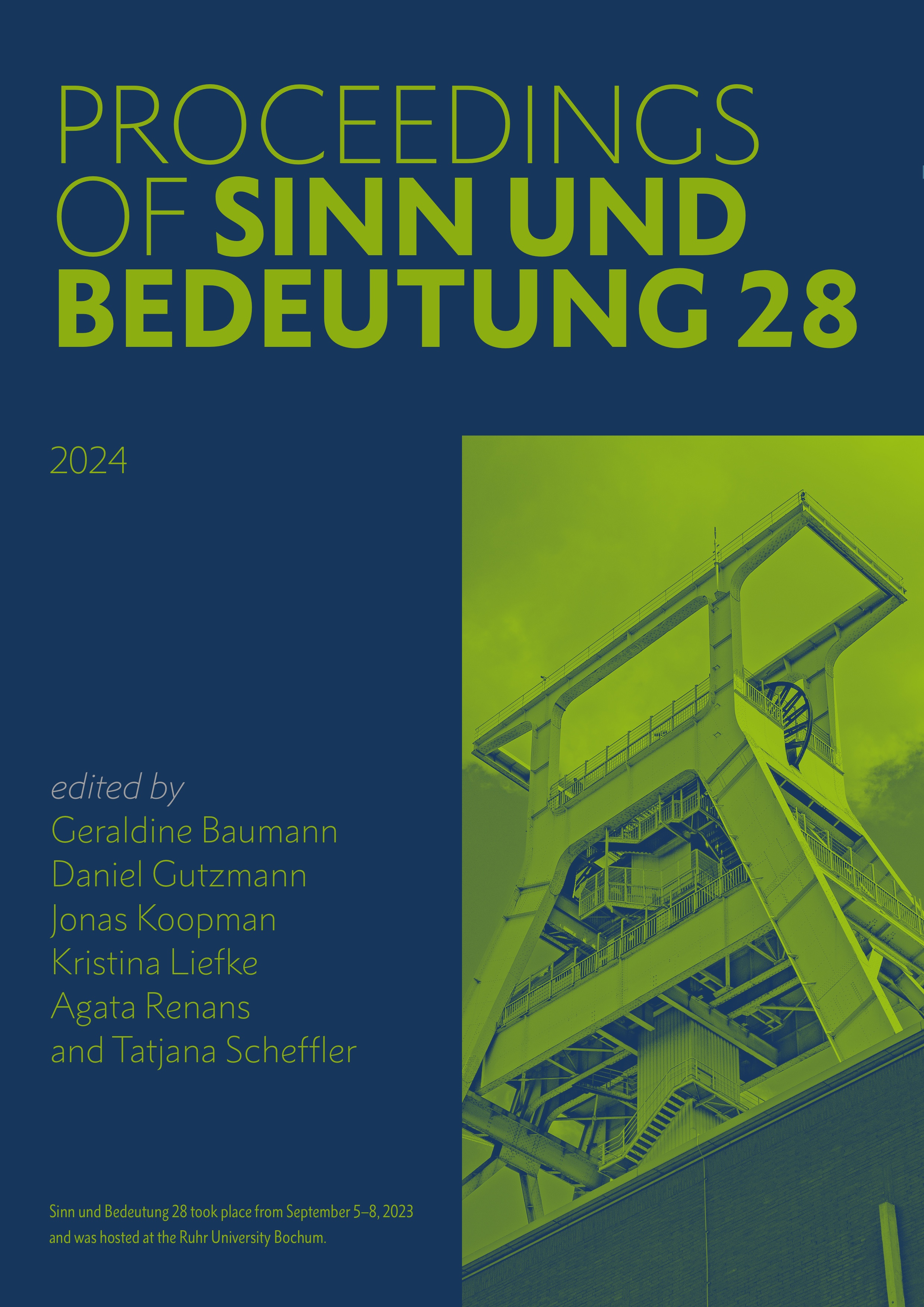Semantics of Mandarin Demonstratives
DOI:
https://doi.org/10.18148/sub/2024.v28.1178Abstract
This paper presents novel data from Mandarin that can tease apart the two main analyses of demonstratives. Dayal and Jiang (2020) propose that demonstratives carry an anti-uniqueness presupposition, requiring there to be another entity meeting the NP description in the larger situation. The Hidden Argument Theory of demonstratives argue that demonstratives carry an additional restriction than a definite description. The Mandarin data I focus on involve demonstratives with restrictions that are so specific that anti-uniqueness cannot be met. By discussing this data, I show that an account of demonstratives based on situational anti-uniqueness is not sufficient. Then, I build an account of Mandarin demonstratives based on the main intuitions from the Hidden Argument Theory. Following Nowak (2021), I argue that the second restriction must be a syntactic constituent. In explaining the restricted distribution of demonstratives, I follow Blumberg (2020) and Ahn (2022) in arguing that there is a pragmatic competition. Finally, I extend Ahn’s analysis and argue that proper names should be added to the inventory of expressions that can occupy the second argument position.Downloads
Published
2024-12-20
How to Cite
Yu, J. (2024). Semantics of Mandarin Demonstratives. Proceedings of Sinn Und Bedeutung, 28, 1049–1059. https://doi.org/10.18148/sub/2024.v28.1178
Issue
Section
Articles
License
Copyright (c) 2024 Jiaxing Yu

This work is licensed under a Creative Commons Attribution 4.0 International License.
https://creativecommons.org/licenses/by/4.0/
